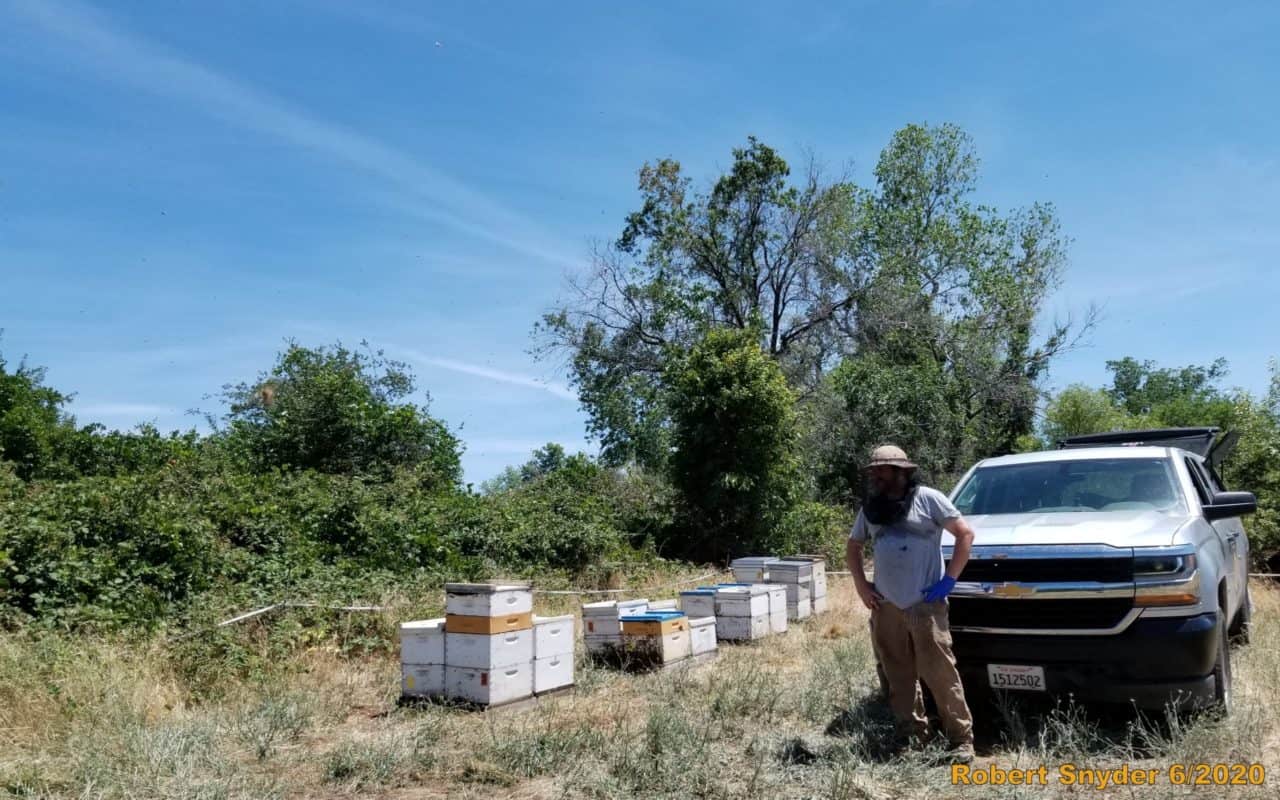This year, I vowed I would conduct one or two small case study trials to investigate some hunches I have had for a while. I am mostly curious about Oxalic Acid Sublimation (OAV) as a treatment against Varroa mites. Primarily I would like to investigate the recommended dosage. But before I can set this up as a valid experimental design, I need to set up some colonies to perform an experiment on. At the Bee Informed Partnership, we look at thousands of colonies each year, but we usually do not maintain our own. This year, I set up a small apiary and ran into some beekeeping challenges I expect you can all empathize with. Here is part one of the story.
Part I: Setting up the Apiary, Increasing Numbers, Moving Colonies, Queen Issues, and More…
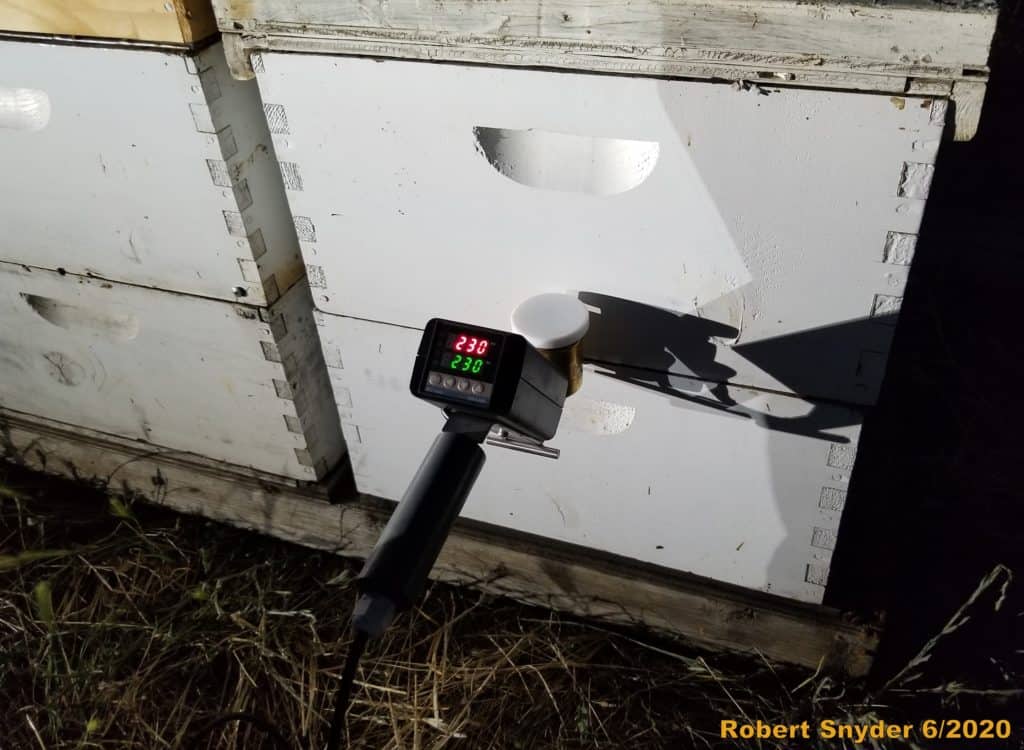
This spring my co-worker Matt and I started off with five colonies that had quite a few mites. We then treated the colonies with two rounds of 50 grams of Apiguard. After the treatment we performed alcohol washes on all the colonies and turned out with mostly zero mites, which we were happy to see. We then split the stronger colonies to increase to seven colonies. The queens mated and the colonies were growing fairly quickly. They had good pollen stores and good weight. At this time, we also culled out old/broken frames and replaced the worst boxes with better equipment we had in storage.
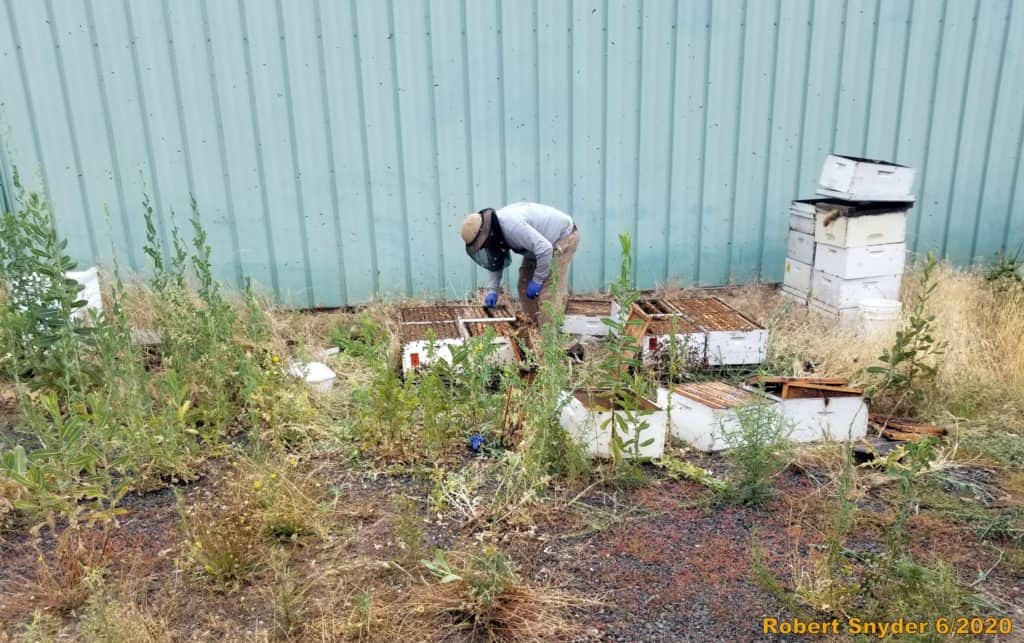
In May we found that our location for the colonies would no longer be available to us. We had to move our colonies and we quickly fell into panic mode. We knew we wanted colonies moved closer to Chico for easy access to perform a few case studies in the fall. We also knew a lot of the area from Oroville to Chico was fairly saturated with other beekeepers’ colonies. After calling several beekeepers we were able to find a new location for our research apiary. Fortunately, the beekeeper also offered to help us move the colonies and equipment to the new location, which was a great help and huge relief since we don’t have the proper equipment to move this many hives at once and would have resulted in us taking several trips to complete the move.
The move was the first challenge. Before the move we knew we needed to do a lot beekeeping management work, such as manipulating frames, equalizing colonies, and making splits. The bottom line was we had to get to 12-15 colonies to have enough of a sample size for the experimental case studies we wanted to do in the fall, but we had no queens. Fortunately, Matt’s brought out six queens from his Colorado operation to help make increases before we moved the colonies to the new location.
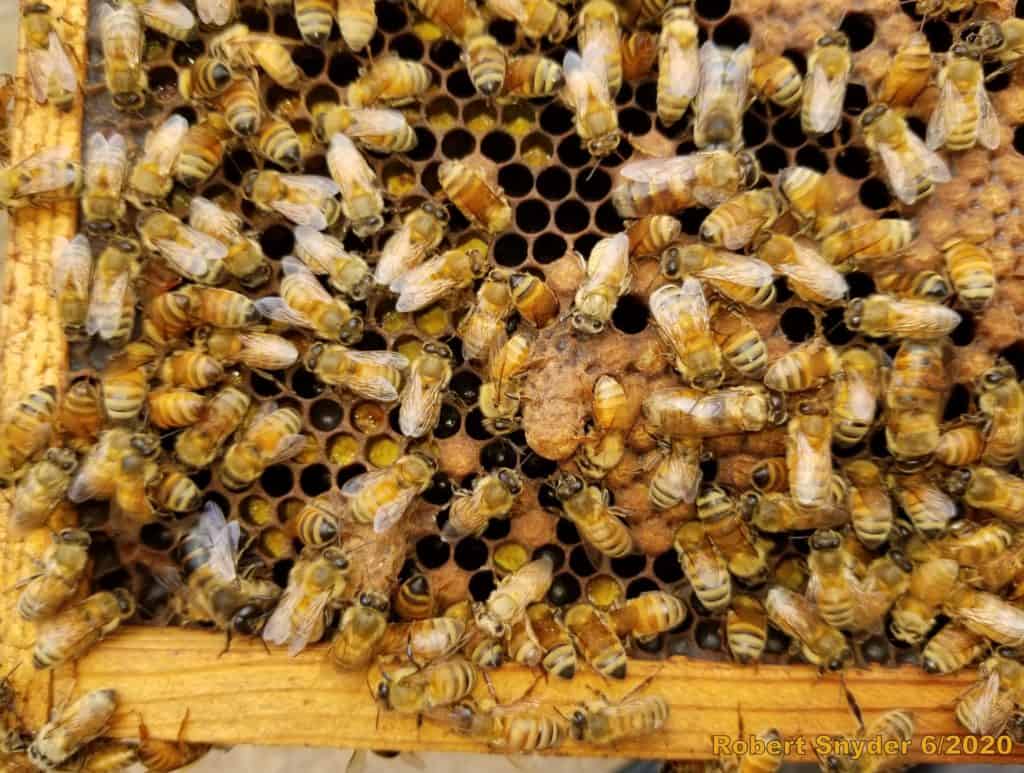
The day before we planned to move the colonies, we decided to take advantage of the empty dumpster at the old location and cull out all bad equipment. We also wanted to get everything onto pallets so it would be easier to move the equipment with a forklift, no small feat. At this time, we also split the seven colonies to increase to twelve colonies. The challenge with making the splits that day, was finding queens in two or more of the colonies which took much longer than anticipated. In hindsight we also made the of having some colony opened for over an hour before we introduced the new queens. I once read that colonies recognize they are queenless after 20 minutes and this seemed to be true that day. We added caged queens to the splits after we found all the queens. The queen cages we introduced just had sugar candy blocking the cage hole, and in retrospect we should have added masking tape or painters’ tape over the small cage hole to prolong the time before the queens would be released in to the colony. But who knows if the queens would have been accepted even then? We think our splitting process went so long that the queenless colonies had already started making emergency replacement cells.

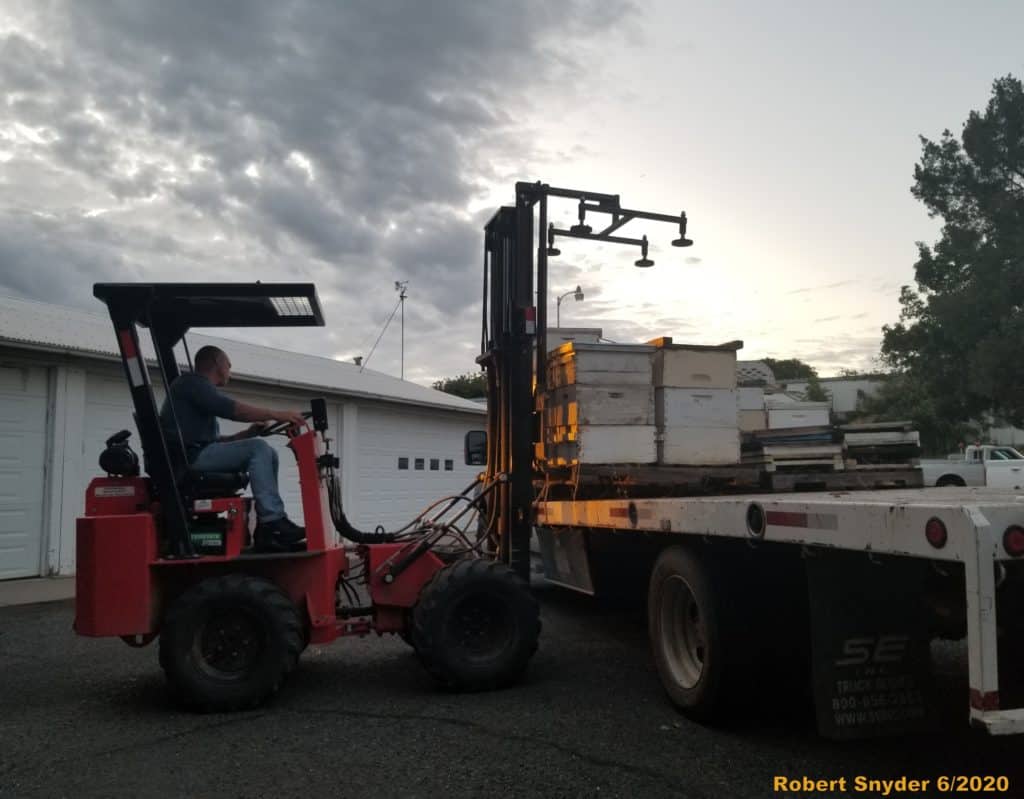
A few days after we moved the colonies, I went through colonies to check on the queens and noted that four of the re-queened colonies had emergency replacement cells and the queens that we introduced did not take… what a bummer! During that same visit, I treated each colony with a 2 gram dose of oxalic acid using the ProVap applicator. I returned a week after the first visit and treated colonies with oxalic acid application a second time. And once more another week later. I also checked on the queen status of all colonies. This time I found four mated queens and marked them with this year’s color blue. I also saw some mites on the bees and decided to treat them again with another dose of oxalic acid. At this time, I also added about a half of a protein patty as forage was a bit scarce for all the honey bees in the neighborhood.
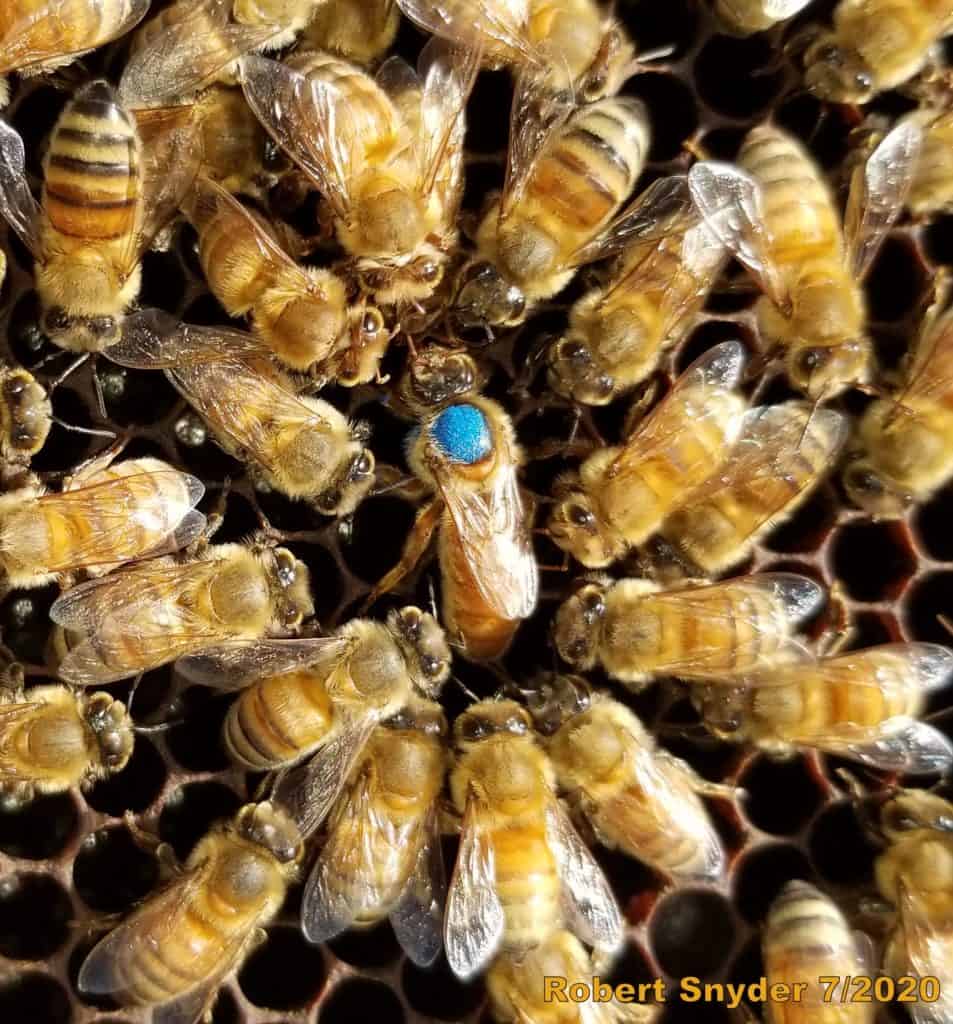
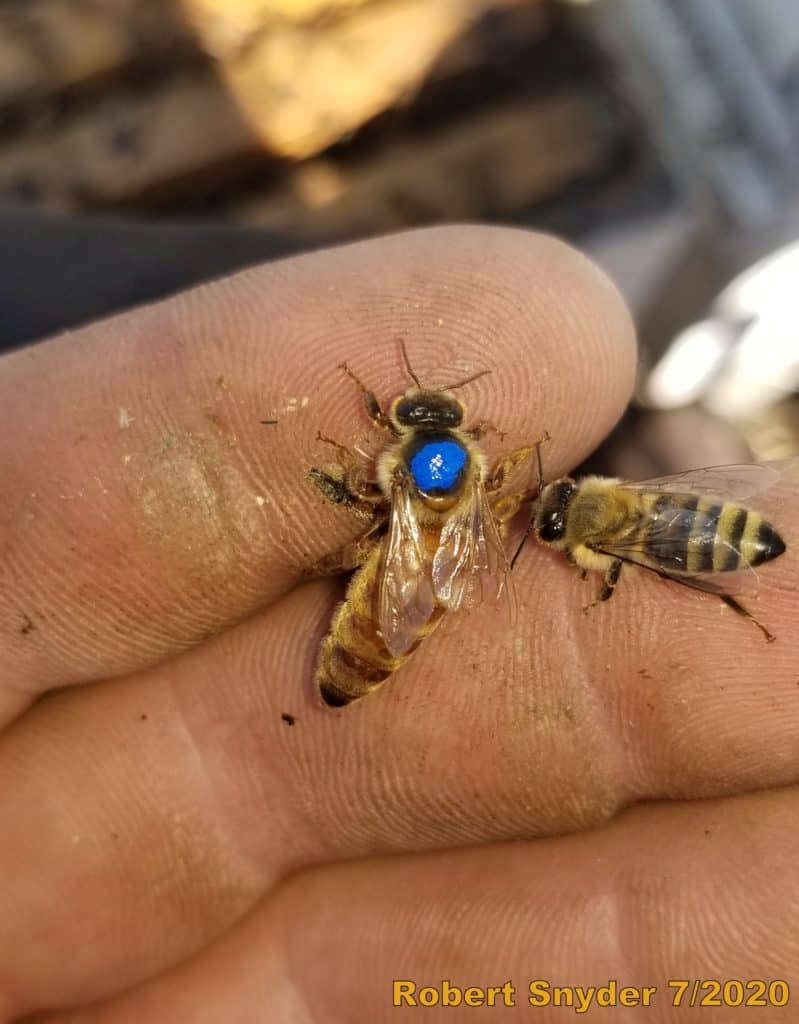
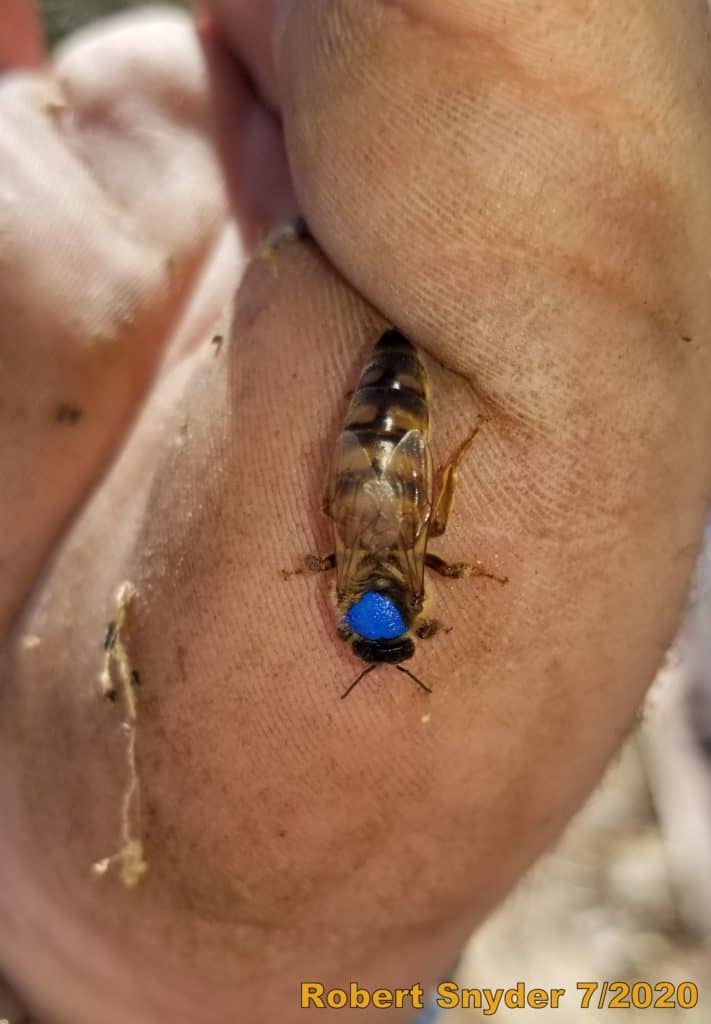
We returned to the colonies about 10 days later to do alcohol washes and see how the new queens were doing. We found no colony above 2% mite level and felt the oxalic acid treatment was successful. This means we were ready to set up and perform our case study throughout September.
I will follow with Part II – The challenges of setting up a small case study experiment, later this fall.
Side note: During the last visit, we noted that two colonies that did not consume all of the protein patty we had given them. I suspect the colonies that did not consume the patty may have a higher mite load prior to treatment. Colonies that do not consume protein supplements are likely to have a heavy mite load in my observation/experience.
